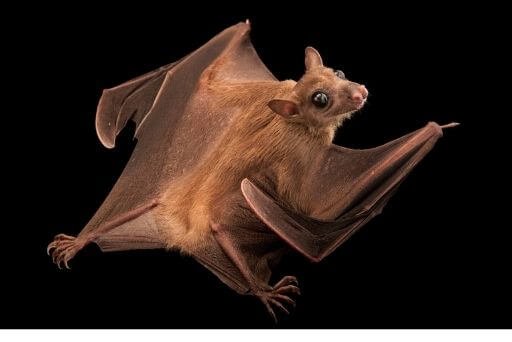Bats: Habitat, food, behavior and diseases
They are often being called spooky, scary, creepy, and associated with horror. Yes, we are talking about bats. Nobody will tell you that bats are an essential species that influence our daily lives in ways we might not even realize. From inspiring medical marvels to eating pesky insects to pollinate our favorite flowers and fruits, they are the heroes of the night. And their feces can be harvested from caves and used as manure. Bats, also flittermouse, are mammals belonging to the Chipotera order. The term ‘Chipotera’ originated from two Greek words – “Cheir” meaning hand, and “Pteron” meaning wing. The bats have forelimbs that form webbed wings, hence the name. This physical attribute allows this mammal to sustain a flight for longer durations. You can find bats in most regions of the world, except for the overly cold areas.
While bats are interesting creatures, they have been fairly associated with numerous diseases that can harm people. The ongoing novel coronavirus pandemic is one example.
With that being said, this post is designed to help you understand everything you need to know about bats so that you are aware of what this mammal is capable of doing – both good and bad.

Bats: Habitat and range
Since bats can fly, their species have become distributed, as compared to other mammals. The only places where you cannot find a bat are the Antarctic and Arctic circles and some oceanic islands. Virtually, bats can reside anywhere that is warm, dark, provide safe passage against predators, and access water and food. This may include caves, abandoned buildings, chimneys, under bridges or structures, and abandoned mining shafts. Bats are not bothered by humans, and they keep their safe distance from human beings. Depending on the species, bats prefer summer and winter habitats.

What do bats eat?
Bats feed on a variety of delicacies, including vertebrates, pollen, fruits, insects, and nectar. There are over 1,400 species of bats across the world, and different bats prefer different foods based on their availability and ease of access. Megabats, which are larger in size, feast on nectar, fruit, and pollen grains. Because these bats burn energy as they fly, they have a high metabolism. These bats have extensible tongues with fine bristles and long muzzles. They look like foxes in some ways.
Insectivorous bats, as the name suggests, feed on insects like moths, beetles, flies, wasps, bees, termites, crickets, and grasshoppers, among others. Some bat species feed on vertebrates like frogs, fishes, birds, lizards, and small mammals.
Vampire bats have a special diet. They feed exclusively on mammalian blood like deer, cattle, goats, and other animals. Such bats can attack humans if needed, but it is quite rare. Vampire bats detect their prey by sensing their breathing and the heat emitted from their bodies.
Bats hunt at night and rest during the day. This is to avoid contact with other predators and reduce competition with birds. Bats can travel long distances of up to 500 miles during the night in search of food. While they hydrate from the foods they eat, some bats dip their tongues as they fly by lakes and streams without stopping.

What’s the behavior of bat like?
Since bats cannot run with their tiny legs, they hang upside down as it allows them to take off quickly when they sense any danger. Megabats are crepuscular in nature, whereas microbats are nocturnal. Bats migrate during winters, and they can hibernate for a period of up to 6 months. They hibernate in large colonies to generate warmth and prefer caves, abandoned buildings, and mines for hibernation. You will rarely see a bat fly in the rain. This is because bats rely on echolocation, and the water droplets can interfere with their ability to locate their home and food source. Depending on the species, you will find bats that are solitary and bats that live in colonies of millions. It is often seen that bats train their young ones and share food with others in what appears to be solidifying social bonds.

Bats and diseases
While bats perform many functions that are beneficial for the planet earth, they have been associated with numerous diseases that are harmful to people, even deadly.
The most common diseases spread by bats include:
- Histoplasmosis
- Rabies
Bats found in more tropical climates are known for spreading viruses that are deadly for humans and other mammals. They include:
- Coronaviruses
- Nipah and Hendra Viruses
- Marburg Virus
- Ebola Virus
People can get these viruses in different ways. While bats don’t bite, they can and will if you go near them or invade their habitat. Being near bat droppings also increases your risk of getting the virus. In some countries like China, bats are delicacies and are sold as meat in markets. Eating an infected bat can also expose you to the virus.




